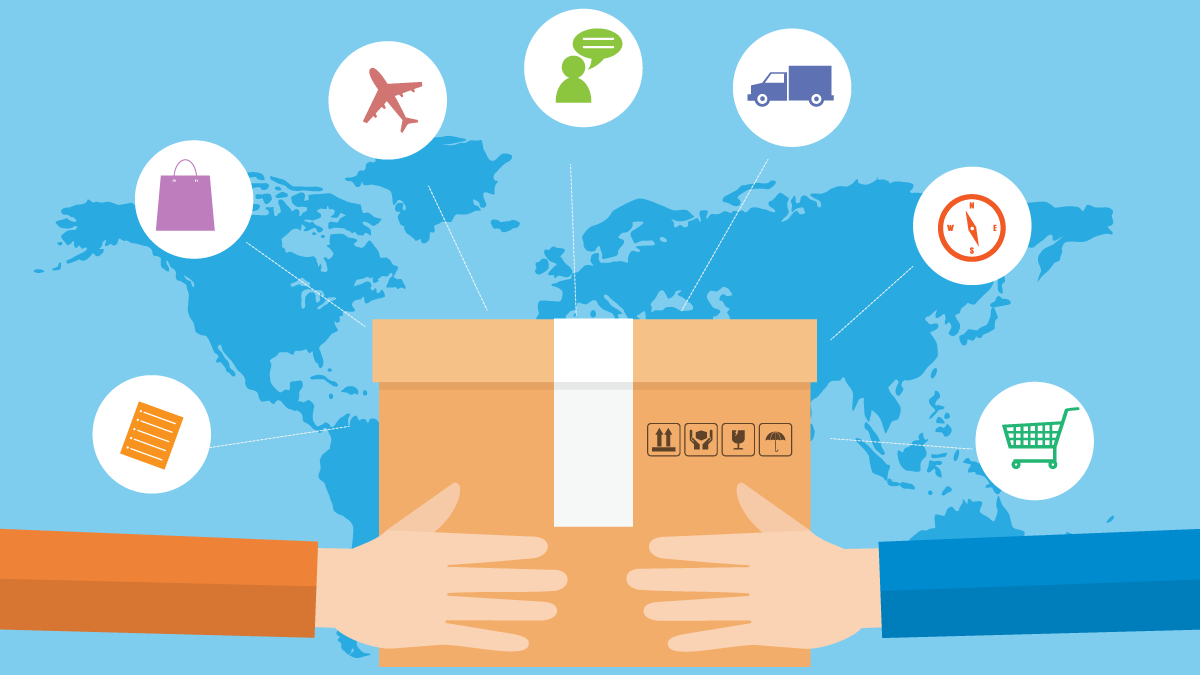
Importing can simply be defined as the process of buying a set of goods and services which are produced in another country. Importing has become an essential thing in the present context of trade with the open economies almost all the countries have. Therefore, under this article, we will be discussing the process which involves the import process.
The basic import process includes the below steps.
1. Decide the country and the supplier from whom the goods to be imported
The very first step in the import process is to decide the supplier from whom the intended goods are planned to be imported. This is a crucial step since it decides the quality, price of the final product, etc.
There are several factors to be taken into account when deciding on a supplier and below are the list of few such factors.
- The total landed cost – It is not only the price per unit charged by the supplier that needs to be considered. But also, the total landed cost including custom duties, transportation, banking fees, insurance, etc.
- Product quality – Quality should be given the primacy over the other factors since the quality is directly linked with the bottom line of the business.
- The country where the supplier is located – There can be different regulations applicable based on the country and the more regulations applicable, the more cost you will have to incur, and the importing cost can also be increased as a consequence. The regulations can be either on quota restrictions, restrictions on entry, or duties to pay.
- Responsiveness of the supplier – The extent to which the supplier can accommodate the change should also be considered. Therefore, when choosing a supplier, it is essential to make sure that our supplier has the capability to ensure the fact that we can compete with our rival companies as well.
- Communication and IT capabilities – Communication and IT capabilities are also important and should always make sure they are compatible with the facilities available with us as well. For example, if their IT facilities are less than the IT facilities which we have, then dealing with them will not be that easy and will also consume an unusual time which in turn generates an adverse impact.
Based on such factors, the supplier should be selected.
2. Supplier place the booking with the forwarders
The logistic arm is activated after the supplier places the booking with the forwarders. These forwarders can either be nominated forwarders of the importer or a normal forwarder. Factors such as terms and policies of the forwarder, delivery time, industry expertise, quality of the service, affordability of the price, capacity which can be handled, types of goods they can transport, etc. should be considered when choosing a forwarder.
3. Receiving the pre-alert
When the booking is placed by the supplier with the forwarder sends us a pre-alert including the information they got from the supplier. This includes information such as,
- Pre-plan of the shipment.
- Information about the shipment.
- Cargo volume
- Type of the cargo etc.
To get this information importers can use a standard format so that they can ensure that none of the important information is missed.
4. Enter the gathered information into the system
In a computerized environment, the next step is to enter the information gathered from the pre-alert into the system. Then the system generates a reference number that can be used to know any of the information about the shipment.
Meanwhile, the goods are also handed over to the forwarder and the gods are moving from the supplier to the importing country.
5. Local process
Since the imported goods are moving into the destination the local process should now be started. This process starts with preparing the required documents to clear the goods.
The most important document needed at this stage is CUSDEC. In the Sri Lankan context, Custom and BOI play a major role in that.
Role of the Custom
- This is the governing body that is held responsible for any in and outbound cargo of any country.
- Issuing all the regulations related to inbound and outbound cargos.
Role of BOI
- This is the servicing center for BOI factories.
- BOI factories are operating under BOI while they should obey the regulations imposed by the Custom.
Along with obtaining the CUSDEC, the next step is to go ahead with the clearing.
Note: There are several documents that are needed in the importing process which will not be covered under this article but will surely be covered under a separate article.
6. Cargo clearance at Sea or Airport
To get the cargo cleared, bills of lading are required and without the original Bills of Lading, none of the goods can be cleared. But in a situation where you don’t have the Bills of Lading with you, a 200% shipping guarantee will allow you to collect your delivery order.
7. Arrange the transport
Now the goods have been cleared and they need to be transported from the port to the importers’ destination. When deciding on transportation, there are transporters inside the ports as well. They already have the passes required to enter the port premises and we don’t have to worry about obtaining the passes for the transporters to bring the goods from the port to the destination.
By the time it reaches the plant, we also must make sure that the transport has obtained the required gate passes for them to enter our premises as well.
Summary
Under this article, we discussed the entire process involved in an import process. It started by selecting the suppliers. Then the supplier placed the booking with forwarders and the forwarder gave a pre-alert informing us all the details about the shipment. Then along with obtaining the required documents, the delivery was cleared at the port, and then it was transported to the importer’s destination.




